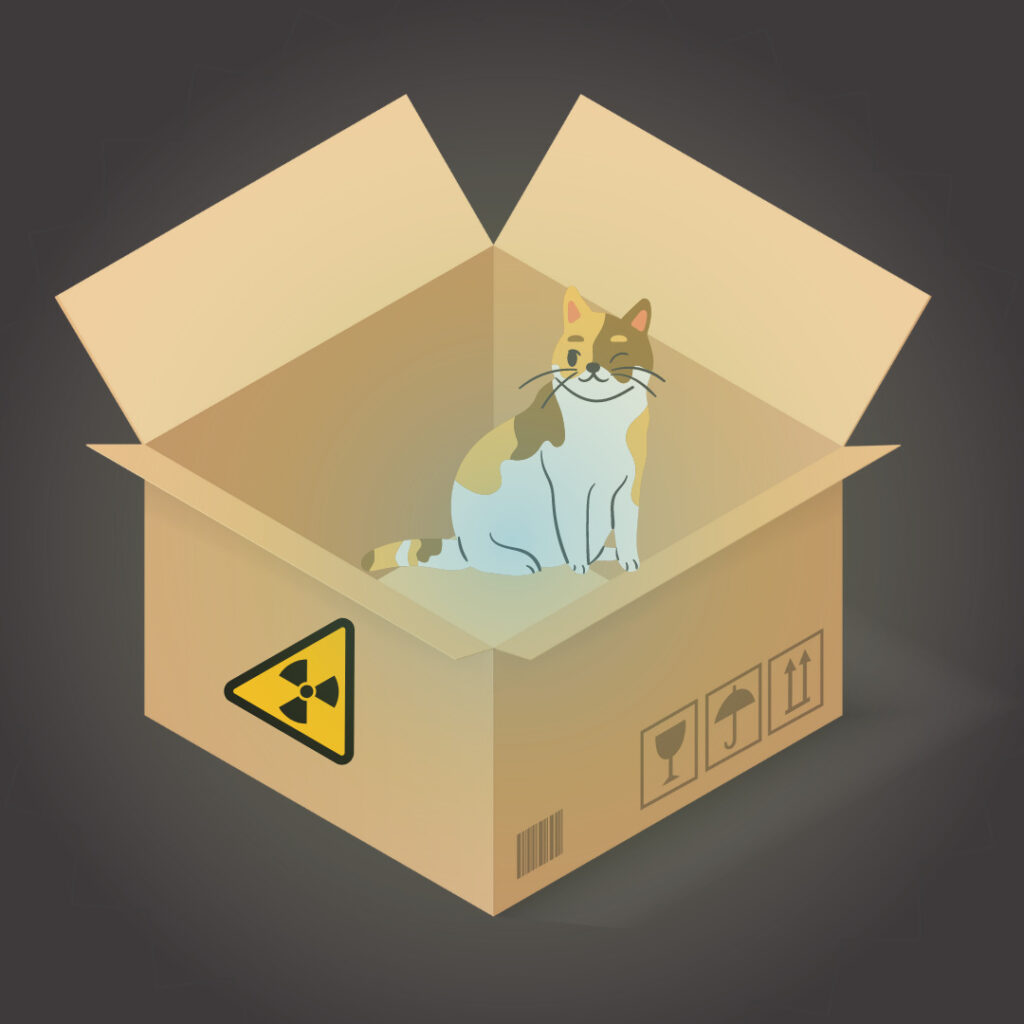Schrodinger’s inflation: The idea that inflation of the money supply can be instantly realized by pegging the currency to a hard asset. The inflation exists, it just has not been realized yet. To better understand the term it helps to be familiar with Schrodinger’s Cat.
Schrodinger’s Cat
Schrodinger’s Cat is a thought experiment devised by Erwin Schrodinger that is used to understand quantum mechanics. In this hypothetical, a cat is placed in a box with a poison that will be released when a specific quantum event takes place. When the quantum event happens, the poison will be released and the cat will die. Since the quantum event is random, the only way to know whether or not the event has taken place (and if the cat is still alive) is to actually observe the cat.
Superposition
Once the cat is enclosed within the box we are unable to tell if it is either alive or dead until we open the box and observe it. While the box is closed, the cat could be either alive or dead. During this time the cat exists in a range of states between dead and alive. This range is called “superposition.” It is only when the cat is observed that the cat’s range of states collapses into one state and the cat is either alive or dead. Think of this superposition as an unrealized or unobserved state.

What does superposition have to do with inflation?
Schrodinger’s Inflation

Since 2020 the M1 money supply (Federal Reserve’s estimate of all currency and liquid deposits) has increased tremendously. Keep in mind that an increase in the money supply does not necessarily lead to a direct increase in inflation. A lot of the dollars that make up M1 are not necessarily chasing goods and services in the real economy because these dollars only exist on bank balance sheets. In this case, the increase in the money supply exists in a state of superposition. The money supply has increased, but the effects have yet to be observed in real terms because not all of this money is chasing goods and services. In practical terms consumer price inflation has not increased at the same rate as the money supply.
Quantum Economics
Observing the Inflation
So we know that the money supply has increased tremendously, and an increase of currency units is the literal definition of inflation. Many people think of inflation as an increase in prices, but historically this is a new definition. For more on the definition of inflation, checkout Peter Schiff’s article on Why the Definition of Inflation Matters. However the cost of goods and services has not increased at the same rate as the money supply. I believe that there is a way to actually realize the inflation of the money supply in goods and services. So how do we observe this inflation?
Peg the Dollar to Observe
If you want to “observe” or realize the inflation of the money supply instantly, peg the dollar to something fixed like a precious metal. With rising consumer prices, there has been a resurgence in talk of putting the dollar on a gold standard or minting a trillion dollar coin. Pegging the dollar to a precious metal is the equivalent of looking inside Schrodinger’s inflation box and finding the dollar dead (As seen on the right). I understand that precious metals are technically “inflationary” as they are mined every year. However the U.S. government’s supply of precious metals is relatively fixed.
When all of the dollars in the m1 money supply are valued with a fixed amount of precious metal they are now effectively chasing a good: the precious metal they are pegged to. The U.S. has a finite gold supply and backing all of the dollars that exist with this limited gold would force the inflation to become realized.

$500,000 oz Gold
In my video on the gold standard restoration act, I explain how backing all of the dollars that exist with the U.S gold supply would essentially reprice gold to around $500,000 an ounce. A trillion dollar platinum coin is a bit trickier to pin down, but it would essentially signal to the rest of the world that one oz of platinum is worth one trillion U.S. dollars. Either way, the precious metals would not actually increase in value, but the dollar would decrease in purchasing power in terms of gold or platinum.
Therefore the idea of Schrodinger’s inflation suggests that all existing inflation will be instantly observed by pegging an inflated currency to a physical asset.
